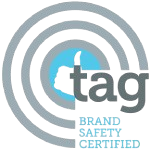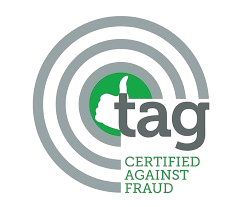Bots make up about a third of all web traffic, and shockingly, 65% of those bots are classified as “bad bots”. These malicious bots indiscriminately destroy marketing campaigns by inflating impressions and clicks; thus, they financially devastate marketing campaigns. So, ironically, although companies do not intend to, they spend a percentage of their ad budget on fraudulent traffic, making every campaign less effective than it could have been. Ad fraud is rising; therefore, the detection of invalid traffic across all digital campaigns has become necessary for businesses’ success in the digital space.
There is a need for a full-funnel ad fraud detection tool to provide omnichannel protection against general and sophisticated invalid traffic i.e. GIVT & SIVT. An additional brand safety layer of protection helps to boost campaign performance. To guarantee the success of digital marketing efforts, the traffic validation tools should provide coverage across app, web, OTT, and CTV ecosystems.
Let’s understand how bot detection works, why it is so important in marketing campaigns, the technologies involved, and how we help organizations overcome the risks of ad fraud in the bot-driven world and enhance marketing analytics accuracy.
Table of Contents
ToggleWhat Is Bot Detection?
Bot detection is the technology and methods used to identify and prevent non-human traffic—specifically bad bots—from serving interaction with a website and other digital destinations.
From a digital marketing perspective, “good bots” (search engine crawlers, etc.) assist in increasing visibility for search engines or in monitoring the performance of a site, bad bots are designed to imitate human behavior, falsify clicks, impressions, and other down-the-funnel engagements. Bots skew digital campaign efficiency for businesses if left unchecked since they adversely affect customer acquisition costs and artificially inflate performance reports.
Why Is Bot Detection Important for Successful Marketing Campaigns?
Here’s why tracking and detecting bots in marketing campaigns are important-
Protection of Ad Spend
Bots generate fake clicks, impressions, and visits which means businesses are paying for fake user engagements instead of real ones. Often leads are also filled up by sophisticated bots bypassing OTPs and captchas. A huge portion of the budget spent on advertising goes to waste without proper detection of ad fraud.
Real / Effective Analytics
Bots taint the quality of the data collected from digital campaigns and yield wrong interpretations. In turn, this may lead to wrong business decision-making as well as inefficient use of resources. Businesses cannot rely on their marketing data unless the bots are detected and blacklisted.
Higher ROI
Based on the bot-cleansed, accurate metrics, businesses that deploy full-funnel ad traffic validation tools understand how their marketing campaigns are doing. This leads to a channel-wise analysis and therefore can operationally direct more budgets to the most effective channels, which means a higher ROI.
Brand Safety
Bad bots are often placed by publishers on content that is highly questionable and brand-unsafe. Good fraud detection tools not only end up finding sophisticated invalid traffic but also provide a layer of brand safety from bad inventory and unsafe ad placements.
How Do Bots Get Detected?
There are many advanced techniques and technologies used in bot detection to identify fraud and block such malicious activities-
Device Fingerprinting
Device fingerprinting helps track and identify unique devices across the internet. Each time a particular device accesses a website or clicks on an advertisement, a unique “fingerprint” can be created with various signals and device attributes. This technique is driven by AI & ML algorithms to analyze data and identify anomalies that pinpoint bot traffic in real time. Sophisticated bots are largely identified at down-the-funnel (i.e. clicks, visits, leads, or sales) metrics. The General IVTs are identified at the pre-bid impression stage.
Behavioral Analysis
Human users do not exhibit predictable patterns, but the behaviors are predictable in the case of bots. Behavioral analysis tracks user interactions to detect unusual activities. One of the most common types is mouse movement. Bots tend to have straight-line patterns vis-a-vis a random pattern in the case of real humans. For any traffic validation tool, behavioral checks should feed into the overall ad fraud checks.
Heuristic Checks
Heuristic checks are a technique to detect bad bots by analyzing the known patterns of fraud on the web. This may include checking for indications that correspond with previously established models of fraudulent activities. Heuristic checks often include monitoring for unusual user-agent strings, changing IP addresses, or clicking patterns. Bot detection tools need to continually upgrade their techniques for detecting bots by keeping heuristics models current and updated to adequately monitor new tactics of fraud.
Deterministic Checks
Deterministic-based bot detection manifests itself by applying an actual, predefined set of rules in detecting bots. These include data on hard data such as the IP address, session cookies, and other metadata about a user. For example, if the known bad bot’s IP address is giving traffic to a website, the system can deny it on plain identification. Deterministic checks can filter out low-level bot activity quickly and are often used in conjunction with more advanced techniques, such as behavioral analysis.
How mFilterIt helped a Global Conglomerate in Bot Detection and Ad Traffic Validation
mFilterIt started working with the advertiser to deliver ad fraud detection solutions, which involve a multi-layered approach that can protect digital marketing campaigns from fraudulent traffic. Both branding and performance campaigns across walled gardens (like Google & Facebook), programmatic channels, and affiliates were validated by mFilterIt.
The bounce rates on their website were sky-high and YouTube VTRs & CTRs were under suspicion. The mFilterIt solution provided the following to the advertiser:
- Full-Funnel Protection – Our technology protects your business on a Full-funnel level, ensuring bots can be detected regardless of whether they interact with display ads, video ads, or mobile app ads.
- Real-Time Monitoring – This solution continually monitors traffic in real-time and detects bad bots before the event can affect performance metrics. It effectively filters out non-human traffic with a combination of behavioral analysis, device fingerprinting, and deterministic checks.
- Comprehensive Reporting – We provide complete reports on bot traffic to give businesses an idea of the prevalence of ad fraud and the tactics used. This makes decisions well-informed and enables campaigns to be optimized better.
- Active Automated Blacklisting- mFilterIt initiated the active blocking of fraudulent bot traffic with a simple integration with the advertiser’s ad manager. This made sure that malicious traffic sources were getting blacklisted which resulted in optimized channel management.
mFilterIt detected 37% overall fraud across channels. The contributors were affiliates, programmatic platforms, and walled gardens in that order. mFilterIt brought down the fraud to 9% overall which resulted in budget savings of $1.2 million. The bounce rates came down significantly and improved targeting helped to achieve better VTRs on video streaming platforms. This happened because the advertiser now allocated their budgets towards good genuine user interactions, thereby improving ROI for marketing campaigns. Moreover, the advertisers could bank on the data of their analytics platform due to the fraud detection checks.
Conclusion
Determining and remedying bad bots is needed to safeguard both ad spending and data accuracy while keeping brand reputation intact. With advancements in bot detection techniques like device fingerprinting, behavioral analysis, and deterministic checks, advertisers can now identify and block bot-driven ad fraud.
Solutions need to give advertisers a solid layer of protection against ad fraud, letting them make the most of their campaigns with legitimate insight and real user engagement. By incorporating advanced ad fraud detection tools into their marketing campaign, businesses may be confident to assume the onslaught of ad fraud attacks and be sure that such campaigns reach the real target audience.
Get in touch to learn more about the Bot Detection.









